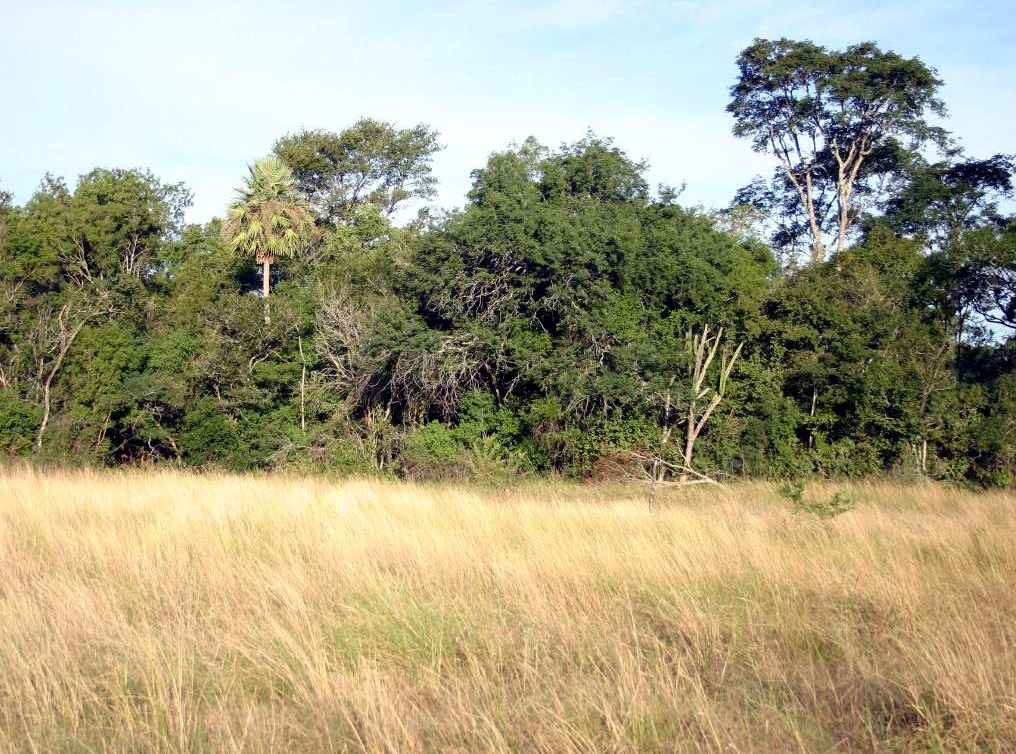The grassland is home to majestic creatures that many in the western world can only hope to see in a zoo. Animals like elephants, cheetahs, and lions thrive in the grassland environment, but the biome is at increased risk as human development continues to expand.
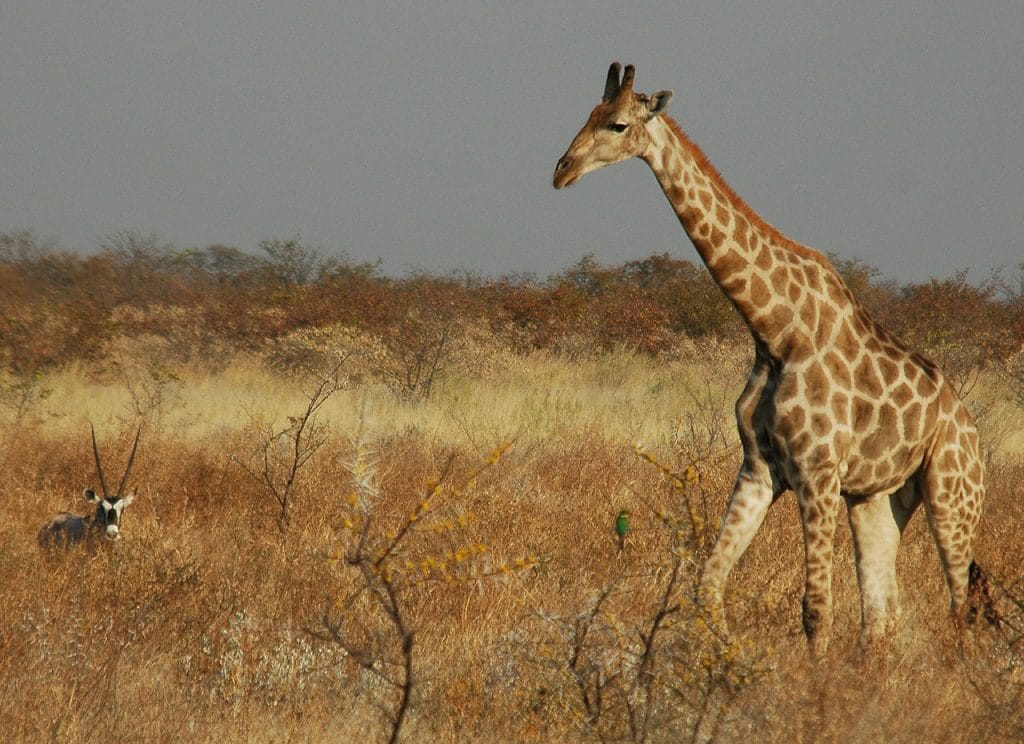
The grassland ecosystem is diverse but fragile. Since the climate is so dry, a few extra elements can disrupt the entire ecosystem. Human intervention is the biggest risk to these animals, and if we’re not careful, we’ll push them to the brink of extinction.
The Grassland Ecosystem
You can find grassland ecosystems in every continent, and their climates differ significantly. The most popular grassland ecosystem in the world is probably the African savanna, where western tourists travel to explore a world relatively untouched by humans.
The two kinds of grassland ecosystems are savannas and prairies. Savannas are what you’re probably picturing when you think of a grassland. They’re home to a wider range of plant life than prairies.
Savannas remain dry for most of the year, but get enough precipitation to harbor trees and shrubs along with miles of grass. Prairies are temperate grasslands and are exclusively home to a variety of grass.
The lack of water in a grassland ecosystem means it’s vulnerable to changes. Instead of rain, many grasslands around the world rely on fire to cleanse the area are renew the soil. Fire kills the dead grass refreshes the earth to make way for new crops. The herbivores in the region rely on fresh vegetation for food, so this process is essential for their survival.
What Animals Call The Grassland Home?
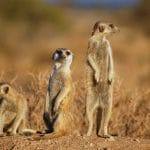

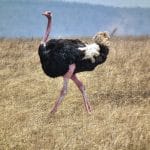
Grasslands are fantastic to witness when they’re entirely natural. They’re one of the only places in the world where we can see the untainted predator-prey relationship.
Multiple different types of animals live in the grasslands. Herbivores graze on the miles of grass, and predators hide and wait for their moment to strike. Unfortunately, the diversity is at risk through multiple channels of human intervention.
Herbivores
The grasslands are home to a wide variety of herbivores. You have smaller mammals like rabbits, prairie dogs, gophers, ground squirrels, and meerkats. On the other end of the size spectrum, there are elephants, bison, kangaroos, giraffes, and rhinos.
Some of the biggest land animals in the world live in the grasslands, but human intervention is beginning to threaten their well-being. If we’re not careful, we might live to see the end of this incredibly diverse habitat.
Predators
Predators roam the grasslands as well, taking advantage of a long list of herbivores that graze on the ample amount of food. Animals like lions, leopards, tigers, hyenas, and cheetahs hunt the above prey animals for food, though they tend to stay away from some of the biggest herbivores in the grasslands.
Unfortunately, predators are among the animals that humans often hunt for sport. Confronting a lion in the African savannah is like facing a monster, and hunters take great pride in bringing one down. Still, hunting is one of the human elements that puts grassland wildlife in danger.
Birds
The grasslands have some of the biggest land mammals on Earth, and their bird residents are no different. The world’s largest bird – the ostrich – lives in the grassland among some of the other large birds like emus and rheas.
Smaller birds play the role of prey for many small predators in the area, while vultures, hawks, and owls feed on what’s left after a larger predator takes down a target. The ecosystem is complementary, but it’s also incredibly fragile.
Bugs
The unsung heroes of the grassland have to be the insects that live there. They’re at the bottom of the food chain, but their role is as important as any. While tropical rainforests are home to some of the biggest insects on the planet, the grassland bugs aren’t too small themselves.
Insects like crickets, bees, butterflies, grasshoppers, beetles, locusts, and many others live the grasslands alongside small predators that rely on them for food. The prairie mole cricket is among the biggest of the grassland insects, growing up to two inches long. These bugs are hard to find because they’re nocturnal and spend most of their time under the grass of the prairies.
Endangered Animals
Through the methods we’ll discuss ahead, many animals in the grasslands are facing the danger of becoming extinct. We already hunted the American bison to near extinction when Europeans first got to this country, and they’re far from the only animal that has encountered this risk.
Many of the grassland species – big and small – in the American grasslands are being forced out of their habitats. The black-footed ferret, Mexican prairie dog, and burrowing owl are all on the endangered species list, and their situation is only getting worse.
Australian grasslands harbor animals that are also facing the risk of extinction. The numbat and sandhill dunnart are two of the animals who are at the biggest risk, though the sandhill dunnart has been able to rebound a bit over recent years.
What is Threatening Grassland Animals?
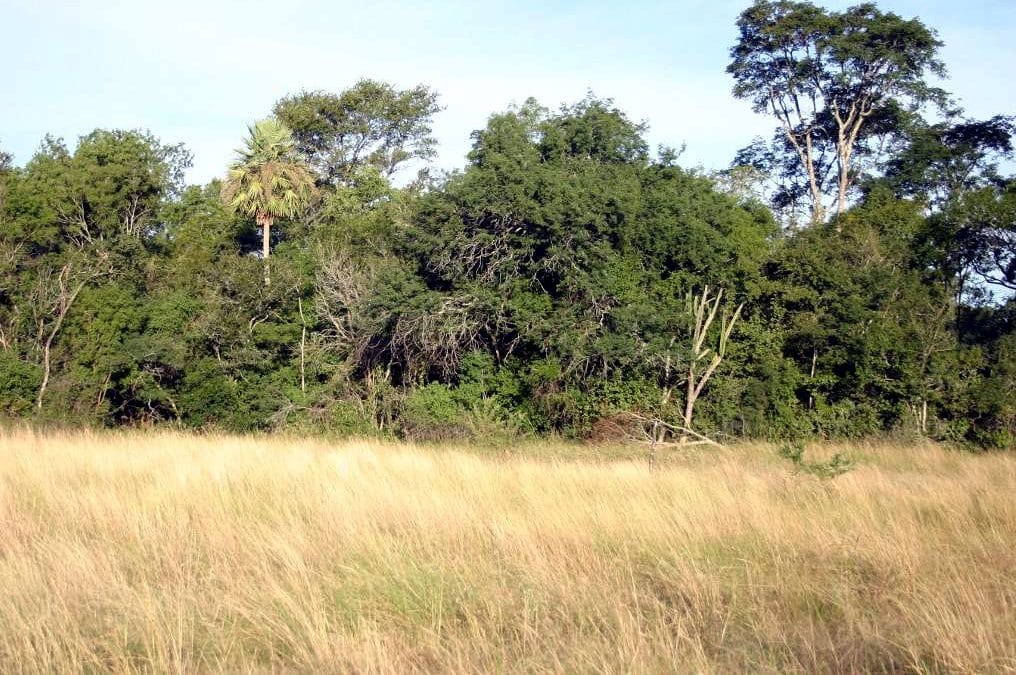
Humans put almost every ecosystem on the planet in danger, and grasslands are no different. As we grow in population and expand our natural impact, we’ll start to impact more animals in different biomes, including those in the grasslands.
Agriculture and Development
As the human population expands, we look for more places to live and grow our food. Eventually, we start developing areas that animals call home, and the grassland animals are part of the casualties of an expanding human population.
Development and agriculture in the grasslands are particularly attractive to humans because of the flat space. Most of the area is level, making farming and development particularly easy.
When people move into these areas, the animals become displaced. Their nests, tunnels, and sources of food moves to a new space, which can often mean the eventual death of predators and prey alike. The pollution and environmental impact of human development also play a role in their potential demise.
Planting crops and adding livestock to an area will also change the composition of the land, and affect the natural habitat of the animals within it. The livestock humans bring with them leads to enhanced competition on the already dry grassland, which is a fast way to cause overgrazing.
Human development eventually strips the soil of nutrients, and overgrazing can lead to the desertification of a grassland area. Overgrazing happens when livestock and wild animals grave too frequently on a particular plot of land. They don’t allow new plants to take hold before eating them, which will eventually dry the area and make it uninhabitable for both animals and people.
When humans start to develop an area, they often look at wild animals as nuisances. Predators attack livestock, and grazing animals eat crops. Farmers will start hunting the animals without considering the environmental impact of their actions.
Climate Change
Climate change presents another threat to grassland animals as the weather patterns and water cycle begin to change. Since grasslands don’t get too much water, they rely on what little water they get to sustain the life of the area.
When water becomes more limited, it puts the grassland wildlife at risk of dying. Animals that graze on the fields won’t have fresh food to sustain them and will begin to perish. With prey animals dying, predators won’t have the same food source that they once had, throwing the whole ecosystem into question.
The increased presence of wildfires presents another threat to the animals that call the grassland home. Wildfires are a natural process of purge and regrowth in the grasslands, but too many wildfires can be detrimental to the area.
When climate change affects the water cycle, there isn’t enough moisture to prevent frequent fires. The already dry grassland becomes even drier, and fires start to become more frequent each season.
Humans can also spark wildfires through their machinery. When humans migrate to grassland areas, the chance of wildfires goes through the roof.
Novelty Hunting
You’ve probably heard of some recent cases of big-game hunting in the African savannah, but it’s far more common than you might think. We’ve seen multiple stories of affluent Americans visiting foreign grasslands for a trophy kill, but these cases are only a small percentage of all the hunting in the grasslands.
We saw a massive eradication of American grassland wildlife when European settlers moved to the continental United States. They hunted the American bison to near extinction for their coat and meat.
Poachers are another massive threat to wildlife in the grasslands. They kill rhinos and elephants for the ivory in their horns and tusks, as a few Asian countries believe it to hold miraculous powers.
We Need to Make a Change
If you care about preserving the world’s natural habitat, there are a few things you can do to help limit the harm humans are doing. You can volunteer or donate to the World Wildlife Fund and refuse to support any politician who doesn’t have a problem with trophy hunting.
Show your support for people who want to make a difference in the grasslands of the world – both morally and financially. More than anything, change the way you consume energy to make sure you’re limiting the entirety of your environmental impact. These are the only ways we can ensure that these fabulous creatures survive for generations to come.
Image Sources
By Photographie prise par GIRAUD Patrick – Own work, CC BY 2.5, https://commons.wikimedia.org/w/index.php?curid=1093844
By Sara&Joachim&Mebe – https://www.flickr.com/photos/sara_joachim/3166714756/in/photostream, CC BY-SA 2.0, https://commons.wikimedia.org/w/index.php?curid=15305478
By Erik Damen – Own work, Public Domain, https://commons.wikimedia.org/w/index.php?curid=495204
By © Nevit Dilmen, CC BY-SA 3.0, https://commons.wikimedia.org/w/index.php?curid=11274937
By Juan238 – Own work, CC BY-SA 3.0, https://commons.wikimedia.org/w/index.php?curid=19063018

